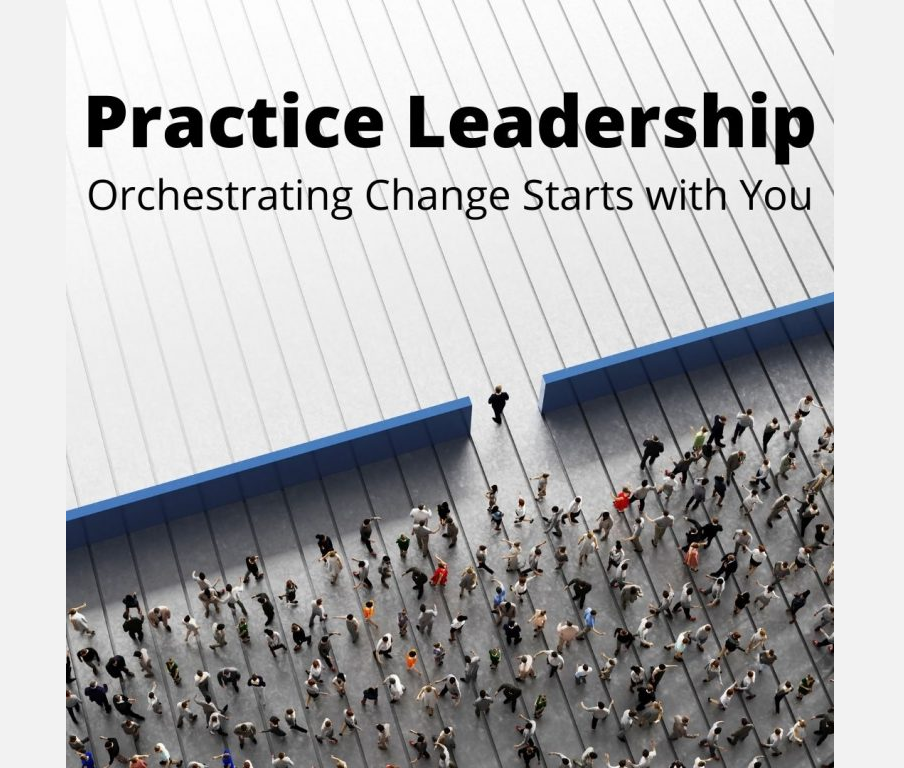As a leader, do you practice leadership?
I use the phrases get clear for you, set the stage, be clear for others, and create a rhythm to describe how leaders continuously orchestrating change for their organizations. Because there will always be change required and it is you, the leader, who ensures that an ability and willingness to always be moving smartly forward is natural in your organization; it’s simply what everyone knows is expected there, and they are committed to do their part.
Choose whichever words or phrases remind you of your practice, and continue support your ability perform and to orchestrate change. Know that holding the position of leader does not mean you are practicing leadership. Consider what your current leadership practice is, and what about your business, role, workplace or life that is not yet aligned with what you really want. Now consider what can be with an effective leadership practice in place.
Your performance, requires a personal practice
Starting with yourself, and what works or needs to change for you to better perform, can bring you clarity about how you might adjust your practice of leadership.
Personal development guru, Tony Robbins, calls his personal practice “priming.” What he does isn’t for everyone, but it is a good example of gaining clarity, setting the stage and creating a rhythm. He shared with Ed Mylett what priming means for him in a video interview, minute 46:32 to 49:53.
He begins his day by plunging into 55 degree water to get his insides moving, and especially his nervous system.
He prays for health for him and his family.
He thinks of three things that he wants to achieve, and envisions having done them already.
He reflects on three things he is grateful for and creates a powerful replay of that moment in his head.
And he reaches out to someone via text or phone call to acknowledge them with specifics of what they did that he found so amazing.
The above take only 10 minutes. Then he tackles the one thing he most doesn’t want to do that day, because for him this increases momentum for the entire day.
What might you practice as a leader?
Your practice that builds internal momentum and primes you to show up as your best self: Certainly your morning, before work, can help set the tone for the rest of the day. So develop a practice. For me, my best mornings start with a 30-40 min Barre3 routine. I do this most mornings, but not every morning. Somehow this primes me for a grateful start of my day. The practice is similar to yoga and simply doesn’t mix with any negative thoughts. If I can’t do 30-40 min, I may do 5-10. It is a practice, a rhythm, every day.
Your practice that builds momentum for others, individually and as part of a team working together: Now that your mind is on what practice might work for you, what practice might work for your leadership? What you do at first can be shifted and improved over time. Any step that is your best at the time, is a smart step.
Here are a few ideas:
Start huddles for your teams, with you being the model of consistency in showing up on time and being concise. A huddle is a short meeting, usually daily, where each person shares the most important things they are working on, what’s next, anything they are stuck on, and celebrating work done or a person who stood out. (If you are a very small company, and you don’t meet otherwise as a team, you can elaborate when the topic is meaningful to all – it’s your team’s meeting, so see what works best to build momentum for all throughout the day). Regardless of how concise you are, this meeting should not last more than 15 minutes. Huddles are sometimes called “stand up” meetings for this reason. They are also called “scrums” for those practice agile methods in their team or workplace.
Consider the organizations last three big and/or urgent projects. Especially home in on the projects that were unexpected, and usually unnecessary, “fires;” problems needing to be solved with urgency. If you pivoted from whatever was when those happened to something better, how might you set the stage for that and orchestrate the change? In terms of The Pivot, while a leader may be in the role of conductor, a conductor doesn’t tell the musicians how to play their instruments. You are pointing toward the music, the vision and direction, and then orchestrating—through practicing leadership—many shifts by many people, over time.
Weave pausing into the culture, and your leadership. Whether you take a day away a month to be part of a peer group that aids your strategic thinking and planning, schedule full days or half days as time for reflection and gaining insight, start saying “no” to what will not clearly move you or your organization toward your vision or strategic objectives, delegate more to others and empower them with, clarity about strategic objectives, mentoring and resources, and the authority to choose their best next steps, identifying where knowledge resides and making sure it is accessible and effectively shared, etc.
What will you do to practice leadership, effectively? If you have taken steps, please share them in the comments below. Or reach out to me for a chat or email conversation. I’d love to hear it, and to celebrate your leadership.

